NVIDIA GeForce GTX 480 GF100 DX11 Video Card Review
The First DX11 NVIDIA GPU – GeForce GTX 480
The high performance video card landscape normally runs on an ever evolving plane, with both NVIDIA and ATI trying to out gun each other every few months. It’s a classic battle of one up that came to griding halt on September 22, 2009 (6 months and 4 days for those of you counting) when ATI launched Radeon HD 5870, the first DirectX 11 video card to market. Performance over previous generation cards was fantastic and showed that a powerful graphics card could also use very little power when in an idle state. Another feather in the cap of the Radeon HD 5870 was a new feature called Eyefinity, which has quickly become the best way to enjoy your favorite games!
For the last 14 months, the highest performing graphics card you could get from NVIDIA was the GeForce GTX 295 and it’s performance was very similar to the much less expensive Radeon 5870. Over the last 6 months it’s been slim pickings on GeForce GTX 200 series inventory, so it is with much anticipation that NVIDIA is truly, finally, for real this time, taking the wrapper off their next generation graphics card code named Fermi, the GeForce GTX 480. Yes, we can finally show you the full performance numbers!

The GeForce GTX 480 is the new flagship product in NVIDIA’s video card arsenal and is designed for maximum gaming performance. The GeForce GTX 480 launches with an estimated price point of $499 USD and is a DirectX 11 ready graphics card that competes directly with the ATI Radeon HD 5870 in the single GPU market.
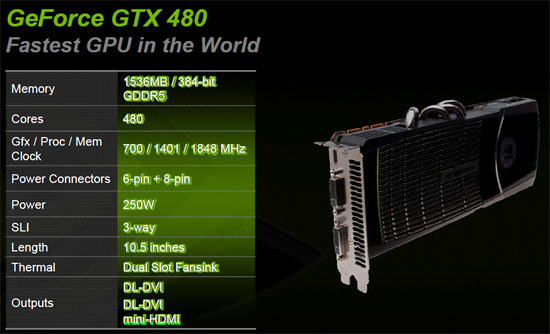
Based on the Fermi third-generation Streaming Multiprocessor (SM) architecture,
GeForce GTX 480 has 480 CUDA cores, doubling the shader horsepower of GT200. The reference card that we will be benchmarking has a GPU clock of 700MHz, with a Stream Processor clock of 1401MHz. The GeForce GTX 480 has a 1536MB frame buffer consisting of Samsung GDDR5 memory clocked at 924MHz, for an effective data rate of 3696MHz. The memory is connected via a 384-bit memory interface and the GPU has 60 texture units and 48 ROPs. This configuration offers a peak texture fillrate of a 42GTexels/s and over 177GB/s of memory bandwidth. Compared to the previous generation, the geometry pipeline is significantly revamped, with vastly improved performance in geometry shading, stream out, and culling. The number of ROP (Raster Operations) units per ROP partition is doubled (to 48 in total). Fillrate is greatly improved, enabling multiple displays to be driven with ease. 8xMSAA performance optimized through enhanced ROP compression. Additional ROP units allow better balance and performance even for uncompressed portions of the scene. The texture units have also been redesigned for improved efficiency and higher real-world performance.
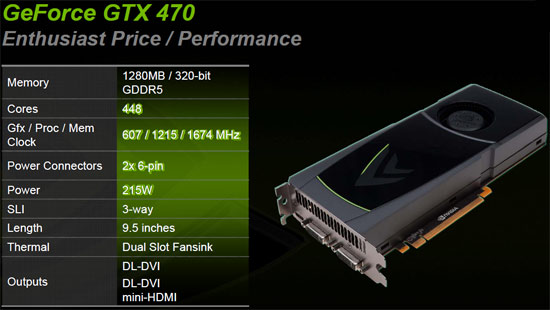
NVIDIA is also releasing the GeForce GTX 470 graphics card today and like the name suggests it will be a little less expensive at $349 and offer less performance than the flagship GeForce GTX 480 graphics card. The GeForce GTX 470 features 448 CUDA cores, 56
texture units, and 40 ROP units. NVIDIA claims that a GTX 470 strikes a perfect balance between price, performance, and power.
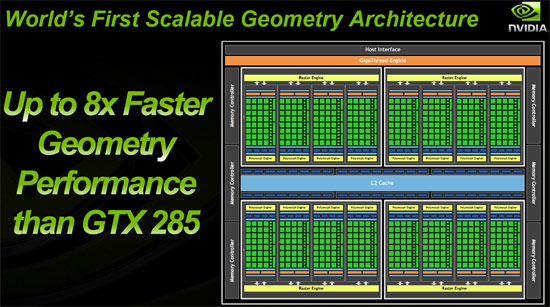
The architecture of this new GPU has already been covered, so we will let you reference that article here if you’d like to read it. The rasterization pipeline has come a long way, but as games aspire to film quality, graphics is moving toward advanced algorithms that require the GPU to perform general computation along with programmable shading. G80 was the first NVIDIA GPU to include compute features. GF100 benefits from what we learned on G80 in order to significantly improve compute features for gaming.
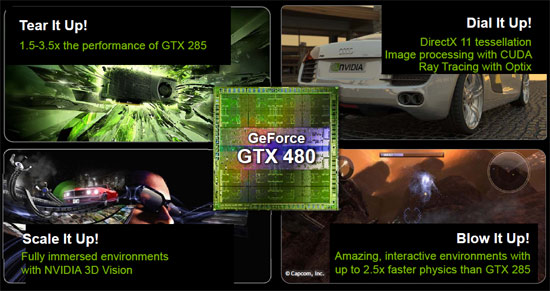
GeForce GTX 480 and 470 leverages Fermis revolutionary compute architecture for gaming applications. In graphics, threads operate independently, with a predetermined pipeline, and exhibit good memory access locality. Compute threads on the other hand often communicate with each other, work in no predetermined fashion, and often read and write to different parts of memory.

If you like to compare specifications, here is a great chart that NVIDIA provided that shows differences between the GeForce GTX 480 and the GTC 470 video cards. Notice that the only similarities between the two are in the physical and thermal categories!
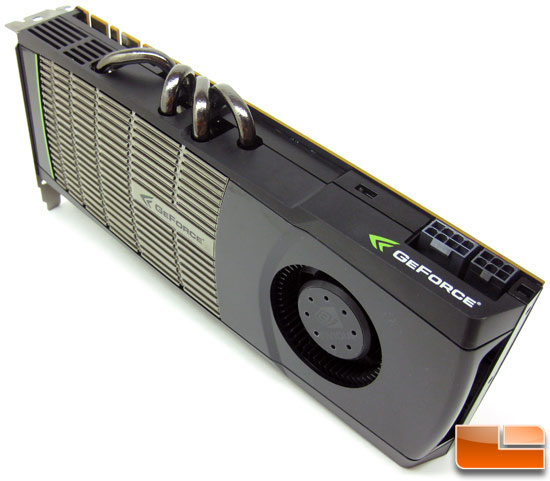
That being said, let’s take a closer look at the NVIDIA GeForce GTX 480 reference card that NVIDIA provided us with for testing.

Comments are closed.